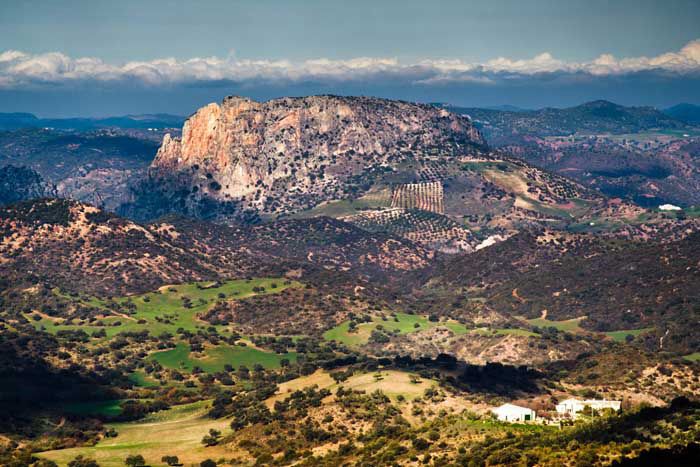
Introduction

Welcome to the Sierra Greenway Visitors’ Center. As you’ll discover along the visit with the audioguide, this ecologically priceless greenway runs through the old Jerez-Almargen railroad route. Today, you can enjoy 36.5 Kms. linking the towns of Puerto Serrano and Olvera in Cadiz province. It also runs through the Sevillian municipalities of Coripe, Coronil, Montellano and Pruna. It is mainly known by its beautiful landscape in an exuberant natural environment with valuable animals and plant species, as well as the chance to enjoy activities such as hiking, bicycle touring or horse riding, in beautiful harmony with nature. It has 30 tunnels, 4 viaducts and 4 completely restored train stations. Three of them (in Olvera, Coripe and Puerto Serrano) are now hotel-restaurants, and the fourth, the Zaframagón train station, is today an Ornithological Interpretation Center and Bird Observatory.
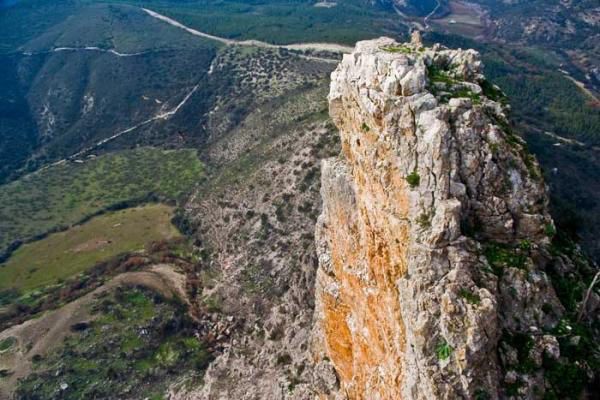
The most symbolic locations along the Sierra Greenway are: The Confluence of rivers where the Guadalporcún flows into the Guadalete, the Chaparro de la Vega, a centenarian holm oak declared Natural Monument, the Rock of Zaframagón Nature Reserve, the Zaframagón Vulture Observatory and the Green Way Interpretation Center, where we are standing with the audioguide. During the visit, you will also be able to enjoy everything that the differents towns can offer: their gourmet cuisine, history, traditions, craftsmanship, popular festivals and of course their people, who give that unique and unforgettable personality to these lands.
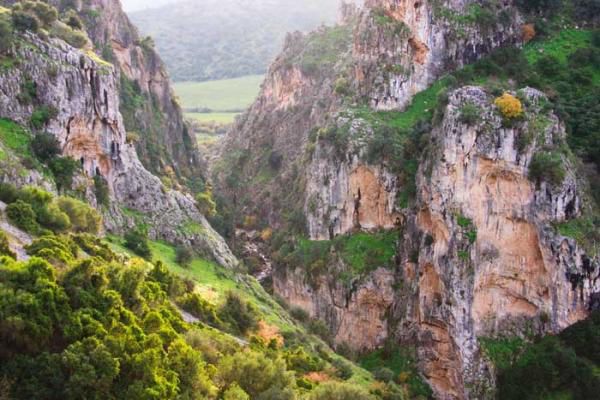
The Green Ways: A new life for the old railroad routes
We begin our route with a Program presentation of the Green Ways—known in North America as Rails to Trails, and in Britain as Rail Trails. Greenways have been a driving force of transformation of old railroad lines fallen into disuse, reborn as non-motorized trails—to be enjoyed by new visitors with the audioguide: on foot, by bicycle, on horseback, or by people with impaired mobility. Greenways allow the visitor to have a look at the rich cultural and natural heritage of the routes which they go through.
At the beginning of the 1990s, 7.600 kms of railroad were abandoned in our country, either because the trains stopped operating or because they never started working due to incomplete construction. With the aim of rescuing this huge historic and cultural heritage from oblivion, the Greenways program was launched in 1993—a plan to turn these railroad lines into green routes.
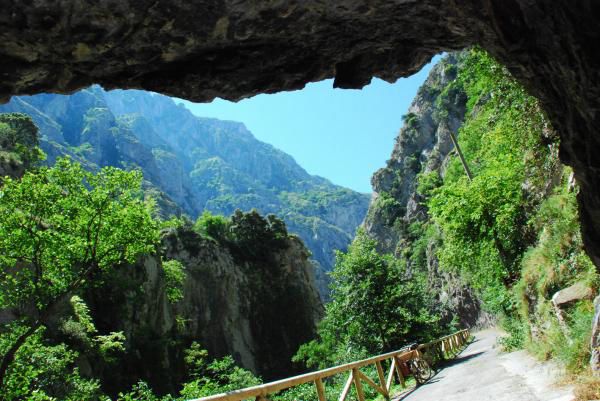
Greenways are a perfect instrument to stimulate a new leisure culture in our society—that of outdoor sports and non-motorized mobility. Today there are more than 1,900 kms of Green Ways in our country. That figure continues to rise, showing the good health that this program has. The Green Ways Program depends on the Environmental and Rural and Marine Ministry, in collaboration with ADIF, RENFE and FEVE. Also take part, Autonomous Communities, Provincial and Municipal Councils, as well as cyclist groups, ecologists and citizens. In the map display of the Iberian Peninsula, yellow indicates the greenways that have been upgraded, and red shows us the greenways that are not. In the interactive screen, you can access the official web site of the Greenways program, www.viasverdes.com, where you can find more information about the different Green Ways that run through Spain, in addition to the information you will find in this audioguide.
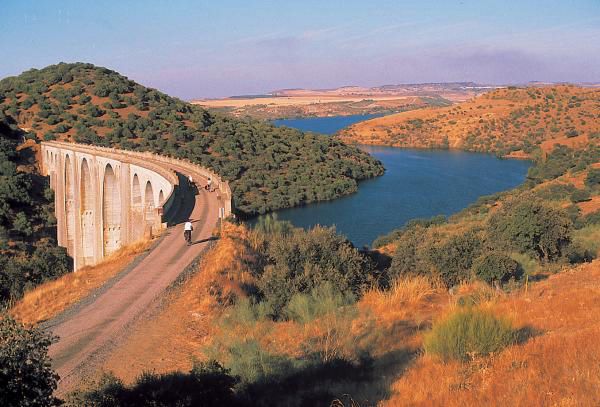
The Sierra railroad: from railroad track to Green Way
Following the tour of the exhibition with the audioguide, we now change subjects and go into the history of a railroad line that never saw any train pass, despite being almost finished. It still had to wait for almost 60 years to return to life as a Green Way. It was in the early 20th century, when the need arose to build a railroad that linked the town of Jerez, in Cadiz province, with Almargen in Malaga province. This was to provide, among other things, a commercial route to take locally-produced wines to other areas.
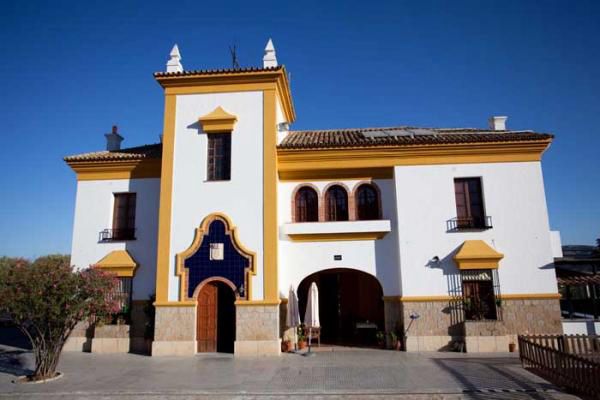
The construction of the railroad that would open the inaccessible Cadiz Mountain Range to the world, was expensive because of the complex topography of the terrain. By 1934, the route was almost completed, reaching up to Olvera, but the outbreak of the Spanish Civil War halted construction which would never resume again. Finally, in 1994, the reuse of part of this railroad route began—turning it into a Greenway, thanks to the collaboration of environmental organizations, the Provincial Councils of Cadiz and Seville, the municipalities which are crossed by the Path, and the Green Ways Program.
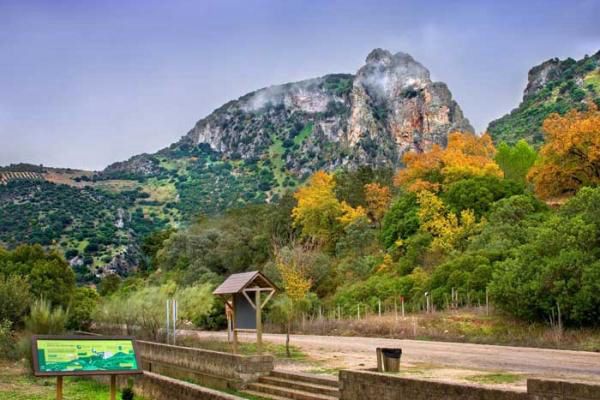
Time Line
In this mechanized Timeline, where we are standing with the audioguide, you will be able to manually find, the most important chronological milestones that have marked the history of the Sierra Greenway, from the beginning of Spain’s railroads to the present.
1837 Spanish railroad history begins with the opening of the La Habana-Benjual railroad line in cuba, then a Spanish colony.
1848 The Opening of the first railroad line in mainland Spain, "The Iron Route from Barcelona to Mataró".
1901 In Jerez the corporation "Railroad Studies from Jerez to Villamartin and Setenil" is established, promoting construction of the railroad line with an initial budget of 24 million pesetas.
1907 The Sierra Railroad Project is held back by the enactment of a law that regulates railroad work concessions, prioritizing narrow-gauge railroads.
1918 The government gives a new direction to railroad policy, promoting new iron routes of normal width, giving impetus to the Sierra Railroad, which had been halted.
1926 A Royal Decree officially declares the Almargen-Jerez route as an urgent matter, and, with a budget of 60 million euros, puts the route between Jerez and Arcos out to tender.
1927 General Primo de Rivera opens the Sierra Railroad in Arcos de la Frontera.
1931 The fall of the dictatorship and the economic decline that followed, led to the interruption of construction, which was never completed.
1933 Resumption of construction of the Almargen-Jerez railroad line, which had been halted a couple of years before. Railroad materials are piled up and six new kilometers of rails are laid.
1936 The Civil War breaks out and Sierra Railroad construction, almost completed, is halted. Part of the sleepers are used for manufacturing weapons.
1945 Resumption of construction of the Almargen-Jerez railroad line, which had been halted for years, but the budget is now obsolete and contracts have to be rescided.
1961 In a performance test, a locomotive runs the route between Jerez and Arcos. It is the first and last journey of the Sierra Railroad.
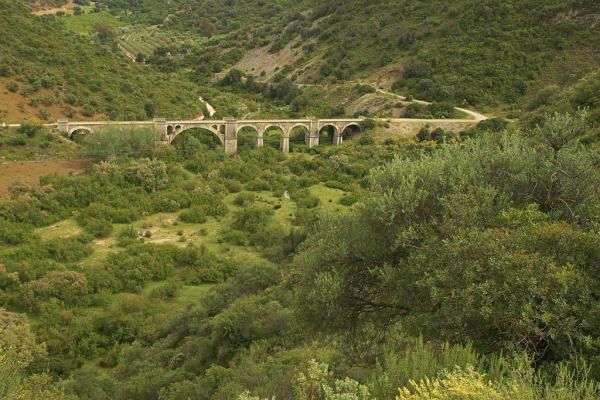
1963 Almargen-Jerez Railroad construction is halted permanently, and the entire system falls into disuse.
1993 The Railroad Foundation, environmental groups and the Provincial Council of Cadiz, draft the Greenways Project for the Sierra Railroad, which is approved by the Ministry of the Environment.
1994 Environmental groups run a campaign to spread the news of the recently approved Sierra Greenway.
1995 Construction begins to rescue the old Sierra Railroad line—now becoming the Greenway.
1997 The Sierra Greenway is opened.
2000 The Sierra Greenway Foundation is established which, from this moment, will be be responsible for the management and promotion of the infrastructure.
2007 The Interpretation Center and Ornithological Observatory are opened in the old railway station of Zaframagón.
2012 The Sierra Greenway Interpretation Center is opened.
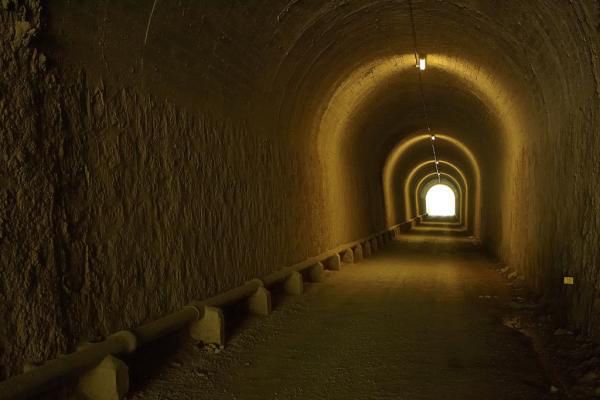
The Sierra Greenway runs along part of the old Jerez-Almargen railroad line, between the provinces of Cadiz and Seville, linking the towns of Olvera and Puerto Serrano. It crosses through a mountainous area defined by the mountains of Pozo Amargo, The Nava, Vaquera de Coripe, Lijar and de las Harinas. It is an area of historical significance, since the route passes through the "Moorish band", a strategic defense zone, which was part of the land of the last Muslim frontier in the Iberian Peninsula. Proof of this are the many Arab castles atop limestone cliffs that dominate the landscape. There are also many archaeological remains of earlier settlements in the region, especially from the Bronze Age and Roman and pre-Roman times, as you can see with the audioguide.
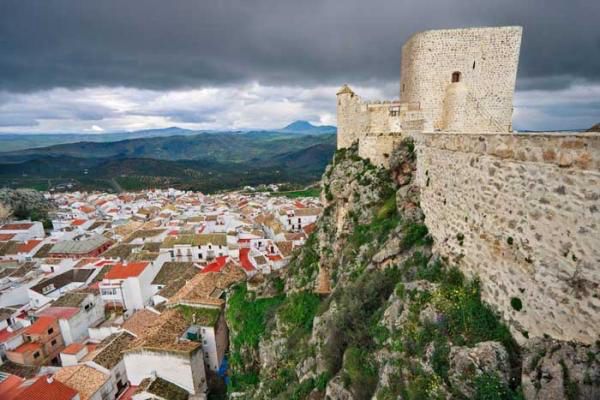
Along its 36.5-kilometer route, the Sierra Greenway runs through six municipalities in the provinces of Cadiz and Seville that the audioguide will describe in details: Olvera, Pruna, Coripe, Montellano, the Coronil and Puerto Serrano. The landscape is covered with olive trees and a Mediterranean forest studded with holm oaks, gall oaks, carob trees, mastic trees and wild olive trees. Alongside the Greenway runs the Guadalete River and its tributaries, the Guadalporcún and the Guadamanil Rivers, by which one finds fresh meadows and a rich riverside woodland. The Greenway route, dotted with tunnels and viaducts, brings us to such interesting places such as the meeting point of the the Guadalporcún and Guadalete Rivers, the “Chaparro de la Vega”, a centennial holm oak of enormous size, and the Rock of Zaframagón Natural Reserve in western Andalusia, home of the largest griffon vultures’ colony. Today the old railway stations receive visitors with a new look, as they have been converted to lodgings, restaurants and interpretation centers. Whether on foot, on horseback or by bicycle, traveling along the Sierra Greenway means going into an area of historic significance, beautiful landscapes and lush nature. A route that follows the steps of an old railroad line, now converted into a Greenway.
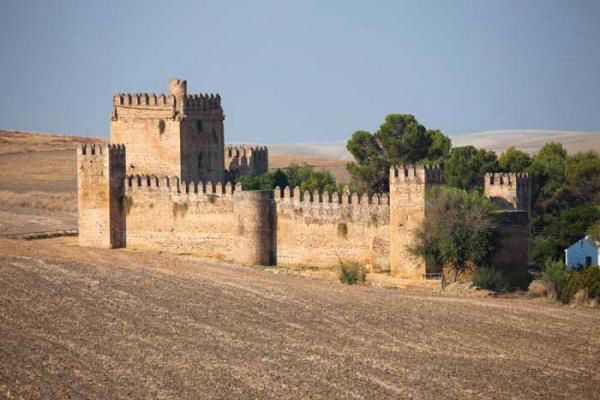
Viaducts: crossing over the water
These three types of constructions tell us about the main infrastructures of the Sierra Greenway: tunnels, viaducts and train stations, and add extra information. This first panel highlights the complex orography of the path, which required major civil constructions. The four viaducts that can be found with the audioguide in the Sierra Greenway are outstanding constructions—samples of engineering practiced in Andalusia in the early 20th century. The most interesting, from a technical and architectural standpoint, is in Coripe, spanning the 237-meter-long Guadalporcún River with the help of ten arches.
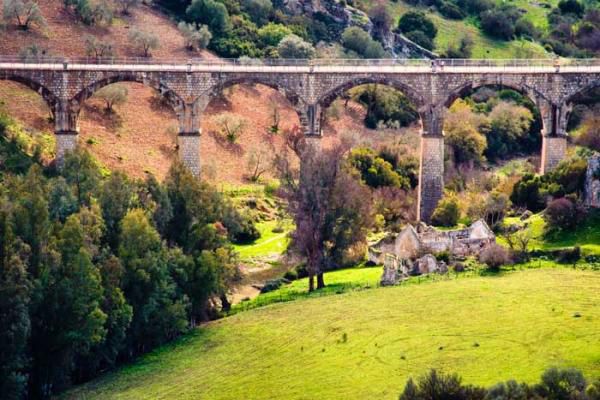
To go through these mountains, it was necessary to build thirty tunnels along the route between Olvera and Puerto Serrano, passing through the reliefs that stood in the way of the old Sierra Railroad. The longest is nearly one kilometer long and runs through the bowels of the “Cerro del Castillo”, in Coripe. This and others long tunnels are now lit.
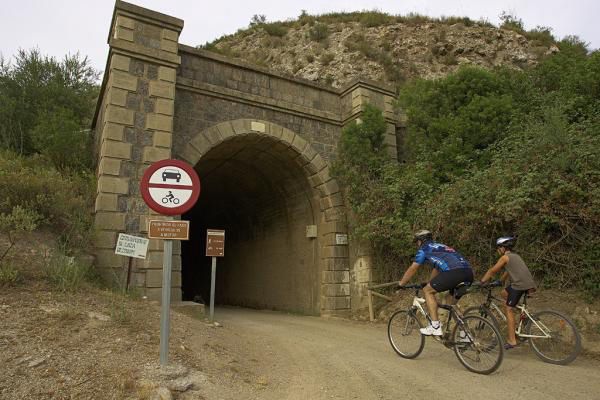
With the arrival of the Sierra Railroad, numerous buildings were built, such as train stations, railroad platforms, warehouses and other railroad facilities, which fell into disuse due to the abandonment of the project. Thanks to the Sierra Greenway Foundation, many of these facilities have been restored, which have become part of the tourist attraction, and include educational and public use.
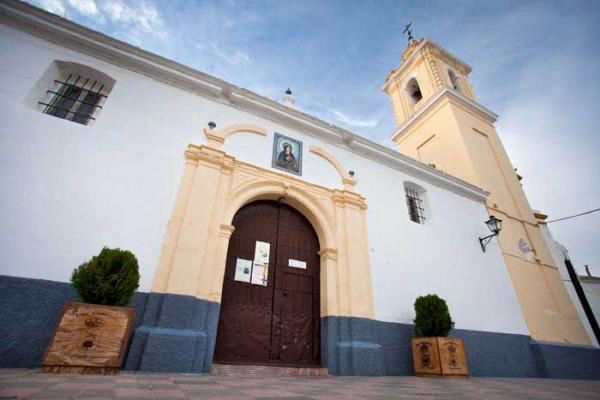
The six towns crossed by the Greenway, starting from Zero km, are: Olvera, Pruna, Coripe, Montellano, The Coronil and Puerto Serrano. Some of their many attractions are highlighted in the next audios of this audioguide.
Olvera. Art, history and nature
In the intricate and beautiful narrow streets in the Neighbourhood of la Villa, among whitewashed houses and stately façades, the Islamic roots of Olvera can be felt. The traveler who reaches Olvera is shocked by its monumental profile, crowned by the unassailable Moorish castle, and by the magnificent Archpriest Church of Our Lady of the Incarnation. It is thrilling to walk the irregular and narrow streets of the town center, which is filled with an exquisite blend of Andalusian heritage, popular architecture and monumental beauty.
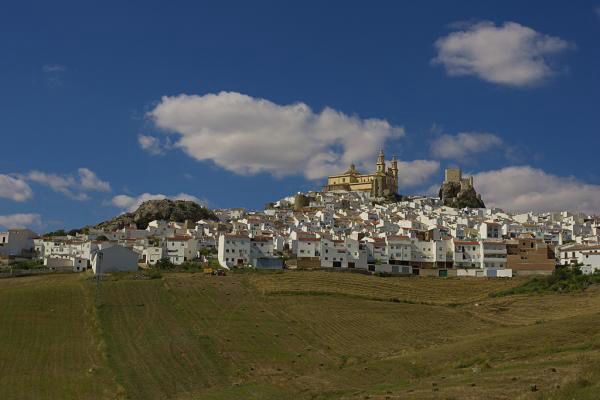
Olvera is rich in traditions and celebrations, highlighting its classic Easter week, festival of popular interest, and the unique "Quasimodo Monday", the oldest pilgrimage in the province of Cadiz, in which the locals gather at the Shrine of Our Lady of Remedies to thank the Virgin for the end of a prolonged drought occurred back in 1715. Besides the splendid olive oils produced in Olvera, it is worth mentioning in the audioguide their sausages and pastries, and, standing out with a popular name, the Monday Sponge Cakes of Quasimodo.
Pruna. The roof of the province
Next stop in this audioguide, the huge crag of the Castle of Iron in Pruna, resembles the sail of a galleon in the distance sailing through an undulating sea of olive trees. The white mansion with Arabic tiles in Pruna is surrounded by a rough sea of olive trees, rising again and again in the Tablón Sierra, the Harinas and the Rabitilla, as well as the Rock of Algámitas and the crag which rules over the Castle of Iron. Here different cultures have passed and all of them have left their legacy. One of the most visible is the name of Pruna, a name given by the Greeks, who remain even today.
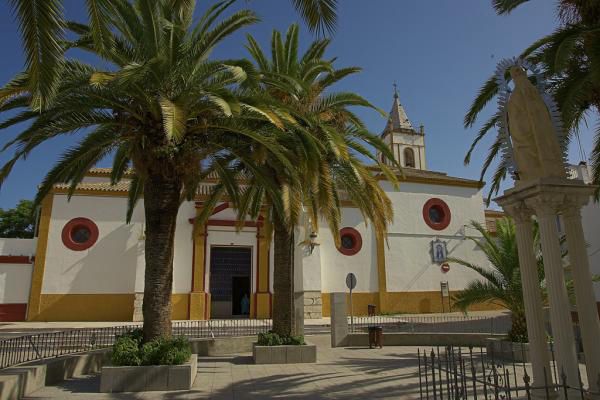
In Pruna, one finds an olive oil of excellent quality, as well as excellent liquors which are made following conventional techniques.
Coripe. In the heart of the Greenway
Under the watchful eye of the Hill of the Castle and on the Guadalporcún River banks extends Coripe, surrounded by extensive olive groves as far as the eye can see. This villa, founded by the Túrdulos in Seville province, dates back to the IV and V centuries B.C. Today, it is known for its good olive oils and pork as well as for its spectacular natural environment. The railroad provided two train stations to Coripe, which are now part of the Sierra Greenway: one in Zaframagón, turned into an Ornithological Observatory, and the one in Coripe, turned into a lodging and restaurant. From this last train station you can access the monumental “Chaparro de la Vega”, a beautiful centennial holm oak under whose branches gather the locals to celebrate their pilgrimage.
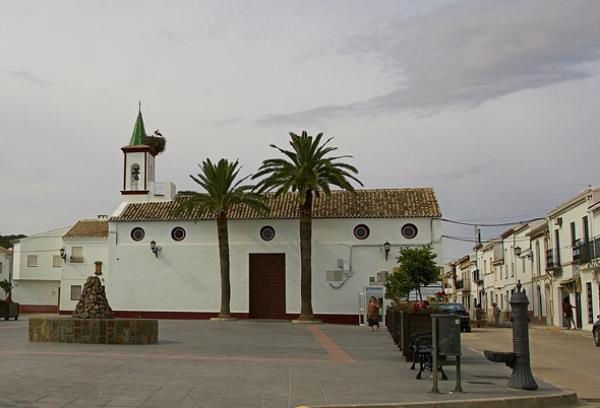
In addition to tasty sausages, an excellent quality of olive oil is produced in Coripe, made from a variety of olive called "lechín".
Montellano. Landscape and monument
Climb Montellano up through the Saint Paul Sierra with the audioguide, magnificently crowned by a medieval castle. Halfway between the countryside and the mountains, Montellano perfectly combines mountain beauty with a prominent festive and cultural attraction. The imposing silhouette of the castle of the “Cote”, a unique 13th century “donjón” tower, prevails over the town. It is a remembrance of the past--the unsettled border between Christians and Muslims was crossed here.
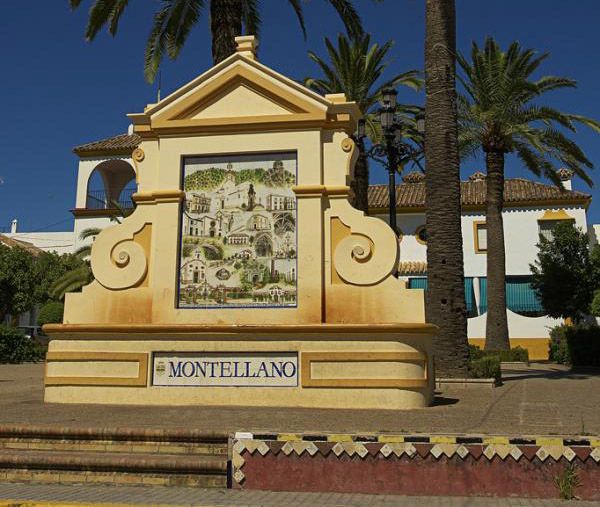
Today still lies Montellano, home to an excellent olive oil and scene of one of the most important pilgrimages in the region, Saint Isidore the Farmworker, declared as a Festival of National Tourist Interest, which reveals the happy and welcoming nature of the locals.
The Coronil. Between tradition and modernity
In the Seville province countryside, next to one of the few native meadows that remain in the region, one finds the the Coronil traditional architecture. A walk through the streets of Coronil with the audioguide provides a unique example of traditional buildings which combine sandstone and lime, typical materials of the region. And a few kilometers from the town center spreads lush and green, the “Dehesa de Pilares”, a playground for the locals. In this dry landscape that opens onto the mountains, historic landmarks and signs of modernity peacefully coexist. For example, the remains of an ancient Roman Salpensa or the unique castle of the Aguzaderas, of Arab origin, share the region with one of the most important photovoltaic solar plants in Spain.
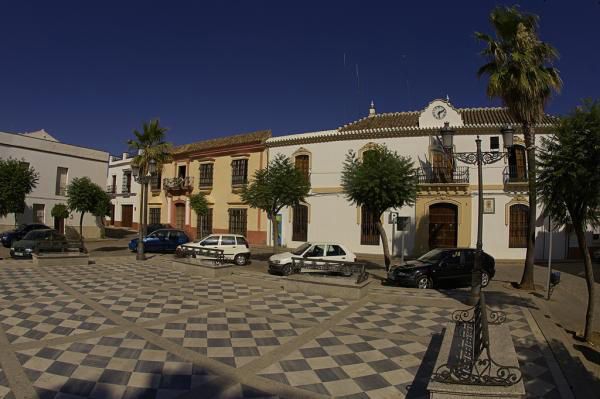
There are many unique aspects that stand out in Coronil such as, its traditional flamenco nights "The Aguzaderas" or the excellent canned legumes.
Puerto Serrano. On the Guadalete river banks
Between the Subbéticas and Gaditanas Mountains, bordered by the Guadalete River, lies white, hospitable and peacefully, the town of Puerto Serrano, gateway to the Sierra Greenway. With an ancient origin, Puerto Serrano is surrounded by olive groves, the main livelihood of the people until recent times, where new crops have been introduced such as strawberry or other horticultural products, boosting the economy of the area.
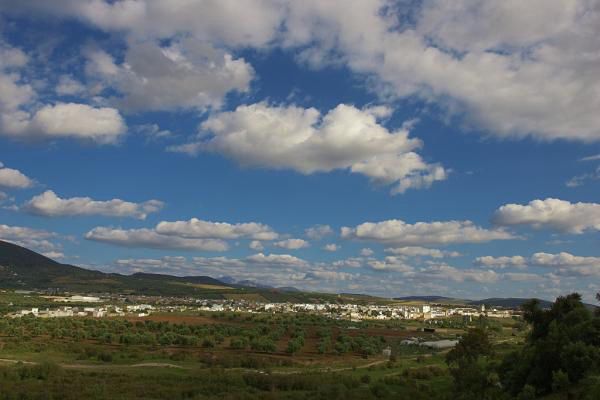
Also known for its bread, the “hornazo” sponge cakes, and for its being the headquarters of the Sierra Greenway Foundation, Puerto Serrano holds many other interesting treasures, such as the Parish Church of Baroque architecture, the Mill of Siré, and old Carmelite Convent with a unique façade, and the ancient necropolis “Fuente de Ramos”, or the Chapel of the Almendral, from which the best views of the town can be enjoyed with the audioguide.
The Sierra Greenway: a sustainable commitment
The Sierra Greenway, in addition to an excellent means of approaching the natural and cultural environment, is also a boom in the sustainable development for municipalities. It helps in the diversity of the economy, previously mainly focused on agriculture. In addition to creating employment, it has been a stimulus for other business activities in the area, such as the hotel and catering trade, tourism, and the sale of gourmet cuisine and handicrafts products. The Greenway has also led to training initiatives, such as environmental education activities, craft centers and employment workshops. The Sierra Greenway is, for the people of the region, a sustainable tourist resource, bringing wealth to the region, promoting the conservation of natural and cultural values in the area, as well as healthy leisure activities, and the enjoyment of nature and the non-motorized mobility.
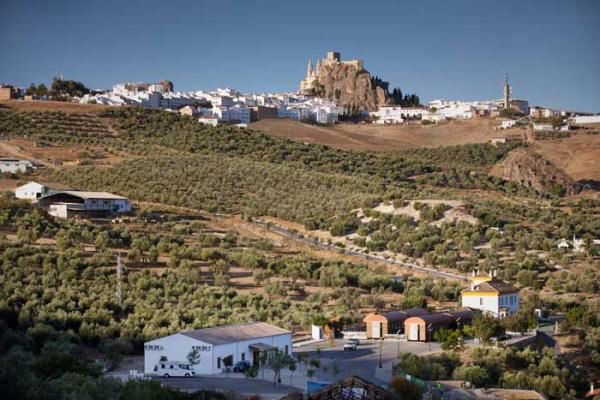
Shade and water. The forest riverside
In the riverside forest fluvial water continually winds its way through the countryside landscape. The Guadalete River, with its undulating banks, flows to meet the Guadalporcún River. The lush meeting point of the two rivers is a wonderful place to visit with the audioguide. Willows, black poplars, poplars, ash trees, oleander and salt cedar trees can be found on the river banks, bringing freshness, shade and color that attracts a wide variety of life. The forest shelters give shelter, peace and food to both permanent residents, and occasional visitors from the river banks.
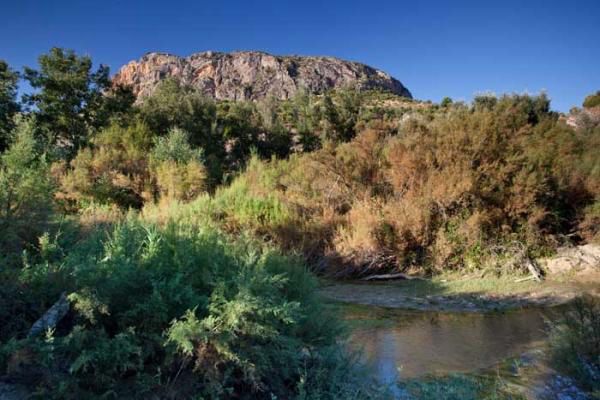
The Guadalete River flows through a wide valley which has been opened by the strength of the water over thousands of years. It is a live river that moves and changes day by day. The stream erodes the banks, dragging the materials, and placing them on other banks. Because of this, piles, islands and beaches of boulders, sand and gravel are formed, you can see them with the audioguide.
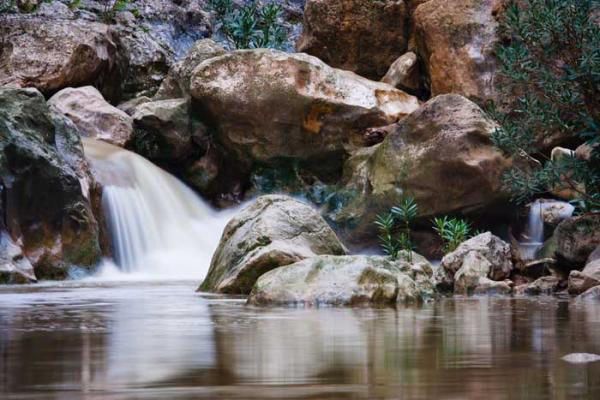
Rivers are ecosystems full of life. The presence of water, the existence of abundant vegetation and the local microclimate of the banks create ideal conditions so that wide range and variety of wildlife gathers in this area. In the mud of the river bank, some inhabitants from the river and riverside have left their tracks. Could you guess who these tracks belong to?
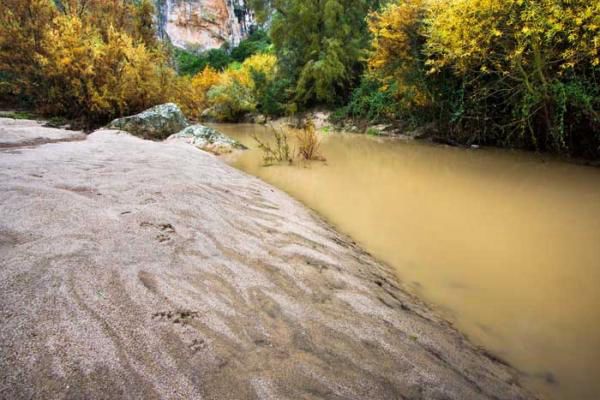
The abundant plants beside the river hide many dwellers, but don’t prevent the sounds of bird calls that give away their presence. The river banks are full of life and color. Trees of green leaves change to yellow and ocher as the season goes by, lush and colorful flowers, bright and colorful plumage, reptiles of bold designs, elusive mammals and silver fish quickly swim the crystalline waters.
The Sierra Greenway Landscapes
For a moment let’s imagine going back in time to the year 1934. The Sierra Railroad was completed and the trains finally are running along the rails. What scenery would we see from the cars’ window? A sea of olive trees climbs thorugh the rockiest and steepest slopes, foreboding the ardous and difficult work of harvesting their beautiful fruits. Also in the rough and rugged mountains, covered with holm oaks, carob and wild olive trees, and carpeted with rockroses, mastic trees, rosemary and broom, we can see the arrival of spring, a burst of color in the delicate flowers. Fresh and shady river banks are brimming with life, populated by black poplars, willows, poplars and ash trees, decorated here and there with oleander and salt cedar trees, are brimming with life.

The landscape has not changed much since the days when the railroad lines waited for the train, as you can see with the audioguide. Today, instead of the rattling sound of the cars, one can be heard the song of the cicada and the voices and laughter of travelers that, on foot, by bicycle or on horseback, go down this path framed by beautiful scenery.
Chaparro de la Vega: centennial holm oak and Natural Monument
At this point we will discover one of the places near the path that you must visit. Near Coripe grows a spectacular holm oak (Quercus ilex) or “Chaparro”, as it is called around here, huge and long-lived, already several hundred years old.
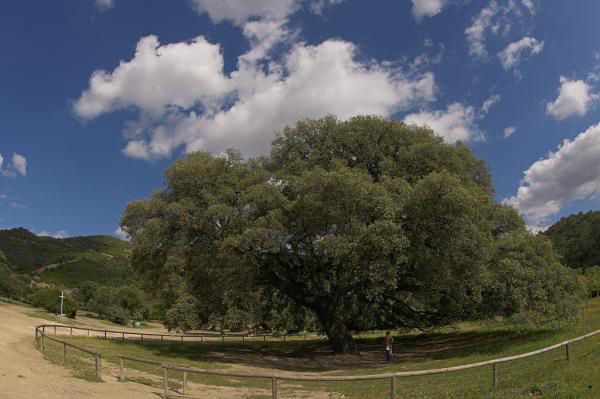
Declared as a Natural Monument in Andalusia, its size is impressive. It’s more than 13 meters high with a top 30 meters in diameter. The name is a local reference, who considered this a gathering and celebration point. Its wide shade, which shelter more than 2,000 people, has put it into the Guinness Book of World Records. Under this tree, festivals and activities are held and locals gather in May to enjoy, year after year, the popular pilgrimage of Fatima.
The Rock of Zaframagón
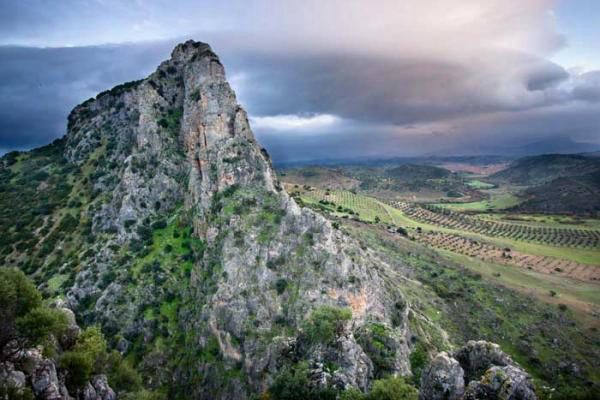
Highlight of this audioguide, the Rock of Zaframagón Natural Reserve is located at the transition between the Seville countryside and the north Sierra of Cadiz. It was declared a Natural Reserve in 1989 by the Government of Andalusia. The Rock of Zaframagón was also classified as a Special Protection Area for Birds in 2002. The Rock is a huge and prominent mass of carbonate rock that rises up to 584 meters above sea level, with a gentle slope on the east side and a vertical wall on the west side, due to the Guadalporcún River, which carves a deep gorge at the rock’s foot. The carbonate materials have been worn, eroded and shaped by the action of the water over thousands of years, creating unique shapes such as the impressive Gorge of the Estrechón, carved into the rock by the force of the Guadalporcún River. The Natural Reserve is an island of natural vegetation with a Mediterranean climate. It is marked with holm oaks and wild olive trees and a shrubland dominated by mastic trees, rockroses and rosemary, as well as savines. The riverside vegetation is abundant along the Guadalporcún; In the walls and steep, rocky areas, an interesting community of plants grow that are especially adaptive to living in such areas.
Despite its small size, the Rock of Zaframagón is a fauna enclave of great importance, especially in relation to the nesting of bird communities, including such birds of prey as: the Egyptian eagle, Bonelli's eagle, peregrine falcon or eagle owl, as well as the griffon vulture. The Rock hosts the largest nesting colony of griffon vultures (Gyps fulvus) in Andalusia, and one of the largest in the Iberian Peninsula. At the Rock’s feet lies the town of Zaframagón, archetype of the rural architecture in this area. In the interpretation center located in the old Zaframagón train station, as well as an interesting exhibition, there is a orhithological observatory where, thanks to a high-precision digital camera, you can get live images of vultures that live on the steeper slopes of the Rock. For those who hike along the Siera Greenway, the Rock of Zaframagón is, undoubtedly, one of the most significant and beautiful landscapes along the way.
Griffon vulture: the king of Zaframagón
In the steep Rock of Zaframagón, is the biggest colony of griffon vulture in Andalusia and one of the biggest in Spain. Over 200 pairs of vultures have built their nests on ledges and crevices in the inaccessible mountain walls of Zaframagón. The vast livestock farms of the area provide the majority part of the food of these majestic predatory raptors.
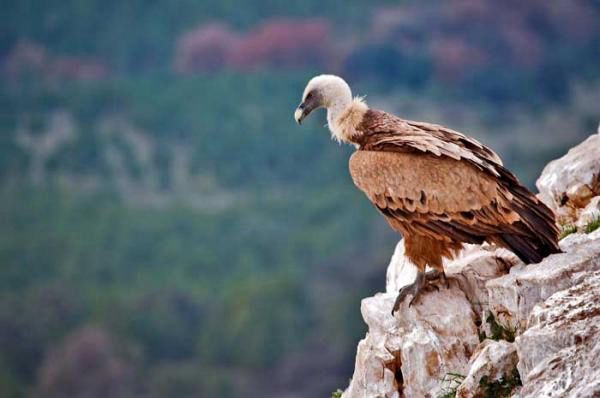
A wildlife Reserve
In the distance, the Rock of Zaframagón may seem almost naked, but the fact is that it is the home of a dense tapestry of holm oaks, wild olive trees, Mediterranean scrub and unique rock vegetation, as well as a dense riverside forest in The Estrechón, a throat carved by the Guadalporcún water at the Rock’s feet. Although the vultures give this place its fame, these are not the only inhabitants in this Natural Reserve: a great diversity of birds, mammals, reptiles and amphibians inhabit these forests, cliffs and riverside.
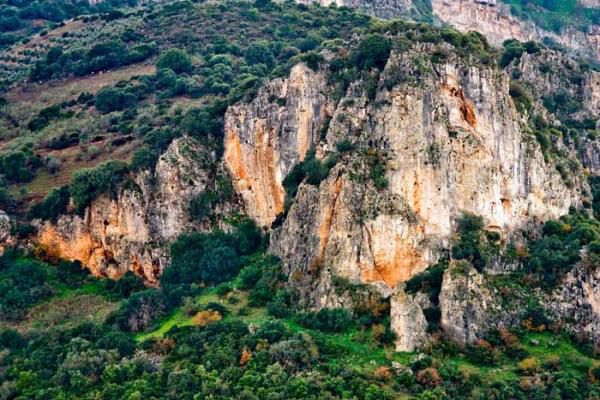
We have reached the end of our visit with the audioguide. You now know the richness of the main Sierra Greenway: its people, landscapes and natural and cultural wealth. It is time to head out and enjoy this unique route between Olvera and Puerto Serrano.
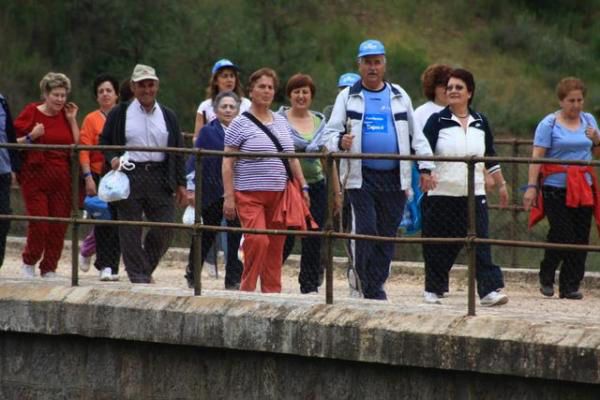
The Sierra Greenway is waiting for you! Enjoy it!
There is also a shop where you will find a series of accessories and souvenirs about the Sierra Greenway. Thank you very much for your visit. We hope you enjoy your visit, along the different paths that offer you the Sierra Greenway.
Bluehertz Audio guides has developed for the Sierra Greenway an audio guide service available in Spanish, English, French and German languages.
The Sierra Greenway address: Centro de Vistantes de la Vía Verde de la Sierra, Antigua estación de Olvera, 11690- Olvera, Cadiz.
- Tel.: +34 956 136 372 - info@fundacionviaverdedelasierra.com - www.fundacionviaverdedelasierra.com -
Back to index